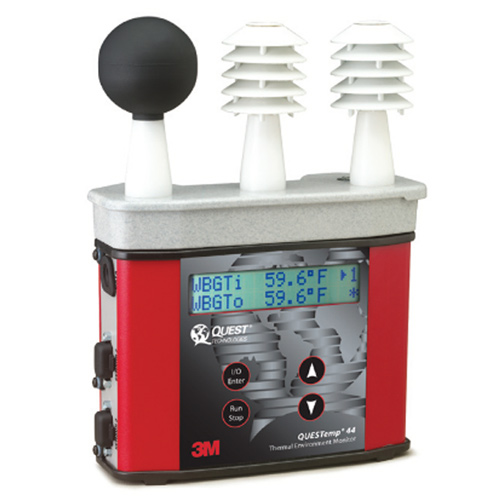Heat Related Issues
All Safe Industries wants people to take extra precautions to stay cool and safe this summer. We offer
electrolyte drinks, heat stress monitors, and cooling vests to help keep workers safe. Please be advised that heat and the high temperatures of summer can pose serious health risks.
What Health Risks?
While a little sun may not seem like that big of a deal, Heat Related Issues are not to be taken lightly. Health risks can include heat cramps, heat exhaustion and potentially lead to a heat stroke. It is important to protect workers and take the necessary steps to prevent illnesses and death caused by heat stress.

Heat Cramps
Heat Cramps are spasms in the muscles caused by exertion. When one is out in the heat and not staying properly hydrated, heavy sweating can cause cramps. If this occurs, the person should stop any physical activity, move to a cooler place and rest in a comfortable position. Light stretching and hydration will ease the symptoms.

Heat Exhaustion
Heat Exhaustion occurs when someone is exposed to warm humid temperatures and they have heavy sweating due to increased physical activity or prolonged exposure. The normal blood flow will be interrupted by increasing flow to the skin and decreasing to vital organs. The result is a form of mild shock. The skin will be cool, moist, pale or red, and may or may not feel hot. The individual may have a headache or dizziness, weakness or exhaustion, and nausea. Prompt treatment is essential. The person should immediately move to a cooler place, remove any restricting clothing and apply cool wet towels to their body. Drinking fluids slowly will help. They should rest comfortably until they feel better.
Heat Stroke

A heat stroke is very serious. It can be life threatening. A person’s ability to produce sweat that cools the body will be inhibited. This may cause the body temperature to rise to dangerous levels that can cause brain damage and even death. The signs include high body temperature (sometimes as high as 105 degrees), the skin may still be moist or it may be red, hot and dry, decreased alertness or loss of consciousness,
rapid, weak pulse, rapid, shallow breathing, and vomiting. A person suffering from heat stroke needs immediate help. Call 911 and move them into a cooler place. The individual should be immersed in a cool bath, or have cool wet towels wrapped around them. They should remain in a relaxed position lying down until medical help arrives. If they are vomiting or losing consciousness, no fluids should be given.
Heat Index
Below is OSHA's own Heat Index to help take protective measures against heat stress.
*Under most circumstances, fluid intake should not exceed 6 cups per hour or 12 quarts per day. This makes particularly important to reduce work rates, reschedule work, or enforce work/rest schedules.
Resources:
https://www.osha.gov/SLTC/heatstress/
https://www.osha.gov/OshDoc/data_Hurricane_Facts/h...
https://www.osha.gov/Publications/osha3154.pd
«
Previous
Next
»